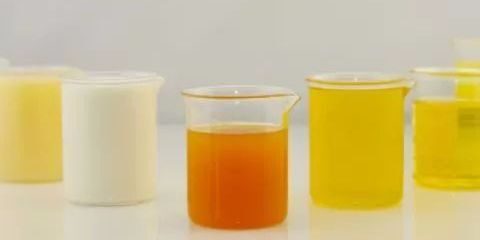The dangers and causes of bubbles in lubricating oil
Anyone who has worked in the field of equipment lubrication for many years understands the necessity of keeping lubricating oil clean and controlling contamination. Lubricating oil must not only prevent moisture, solid impurities, particles and other contamination, but also avoid entrainment of air in the lubricating oil – whether it is foam on the surface of the oil or bubbles contained within the oil.
The reasons why air is mixed into lubricating oil are complicated. Sometimes it is not necessarily the problem of the oil itself. Therefore, adding anti-foaming agent and changing the oil cannot solve the fundamental problem. Let’s learn about the invisible killer in lubricating oil – “bubbles”.
First, let’s understand what harm do bubbles and foam do to lubricating oil and machines?
1. Accelerate the rate of oxidation and deterioration
Bubbles will accelerate the oxidation and deterioration of lubricating oil, accelerate the consumption of additives, affect heat dissipation, fail to form a complete oil film, and cause wear and tear on equipment.
2. Cause local high temperature
Bubbles can also cause local high temperatures in high-pressure systems, causing oil to quickly deteriorate. In addition, air is easy to compress, and if there is gas in the lubricating oil, the thickness of the oil film will become thinner or even the oil film will rupture, causing direct friction between mechanical parts, causing wear.
3. Cause cavitation damage
The bubbles burst under pressure, causing cavitation damage to the metal surface. In addition, bubbles can also cause equipment to operate erratically.
Regarding the problem of bubbles in lubricating oil, oil testing experts and lubricating oil technicians have conducted a series of studies. Let’s take a look at the related situations of bubble generation:
1. Pure oil itself will not produce foam. If other things are added, foam will occur, such as foreign impurities and additives.
Lubricating oil is prepared with base oil and additives. The base oil is the oil before any additives are added. The oil at this time is pure and will not produce foam. However, in order to enhance the performance of the oil, some additives need to be added, such as anti-wear agents, extreme oils, etc. Pressure agents, detergents and dispersants, etc. The more polar additives are used, the easier it is to cause foaming. For example, anti-wear agents and extreme pressure agents are polar additives.
2. The size of bubbles in the oil is related to the interfacial tension of the oil. The smaller the tension, the smaller the bubbles formed. The smaller the bubbles, the easier it is for the oil to form more stable foams that are less likely to burst and disappear.
3. The entry of water into the lubricating oil will reduce the interfacial tension of the oil, making the lubricating oil more likely to foam. For most oils, as long as there is a water content of 1000ppm, the oil will continue to foam.
4. The higher the viscosity of the lubricating oil and the smaller the bubbles contained in the oil, the slower the bubbles are released, which will cause more bubbles in the oil.
If the bubble volume is larger, the time for the bubble to be released will be shortened. This is easy to understand. The larger the bubble volume, the easier it is to rise to the surface of the oil.
5. The volume of bubbles is inversely proportional to the viscosity of the lubricating oil. Low-viscosity oil is prone to large bubbles, while high-viscosity oil is prone to small bubbles.
The larger the bubble, the easier it is to burst, while the small bubble is relatively “tenacious” and not easy to burst, so it is relatively stable after being generated and takes a longer time to disappear.







